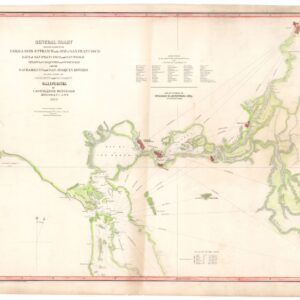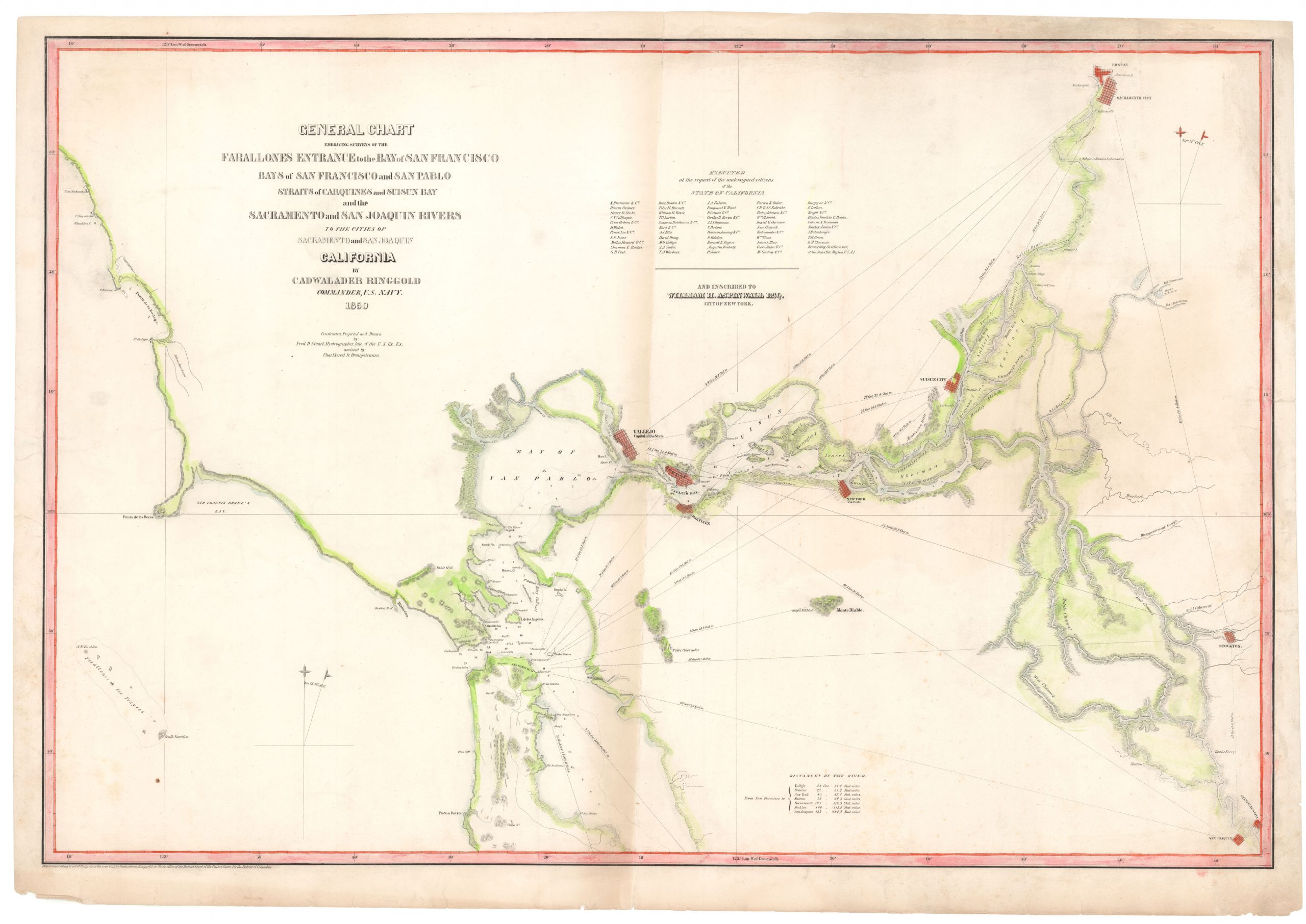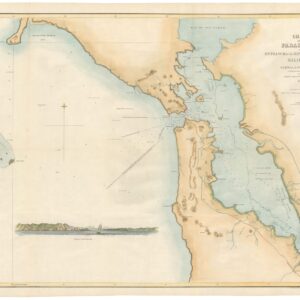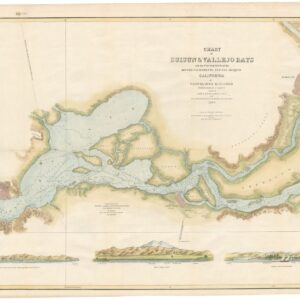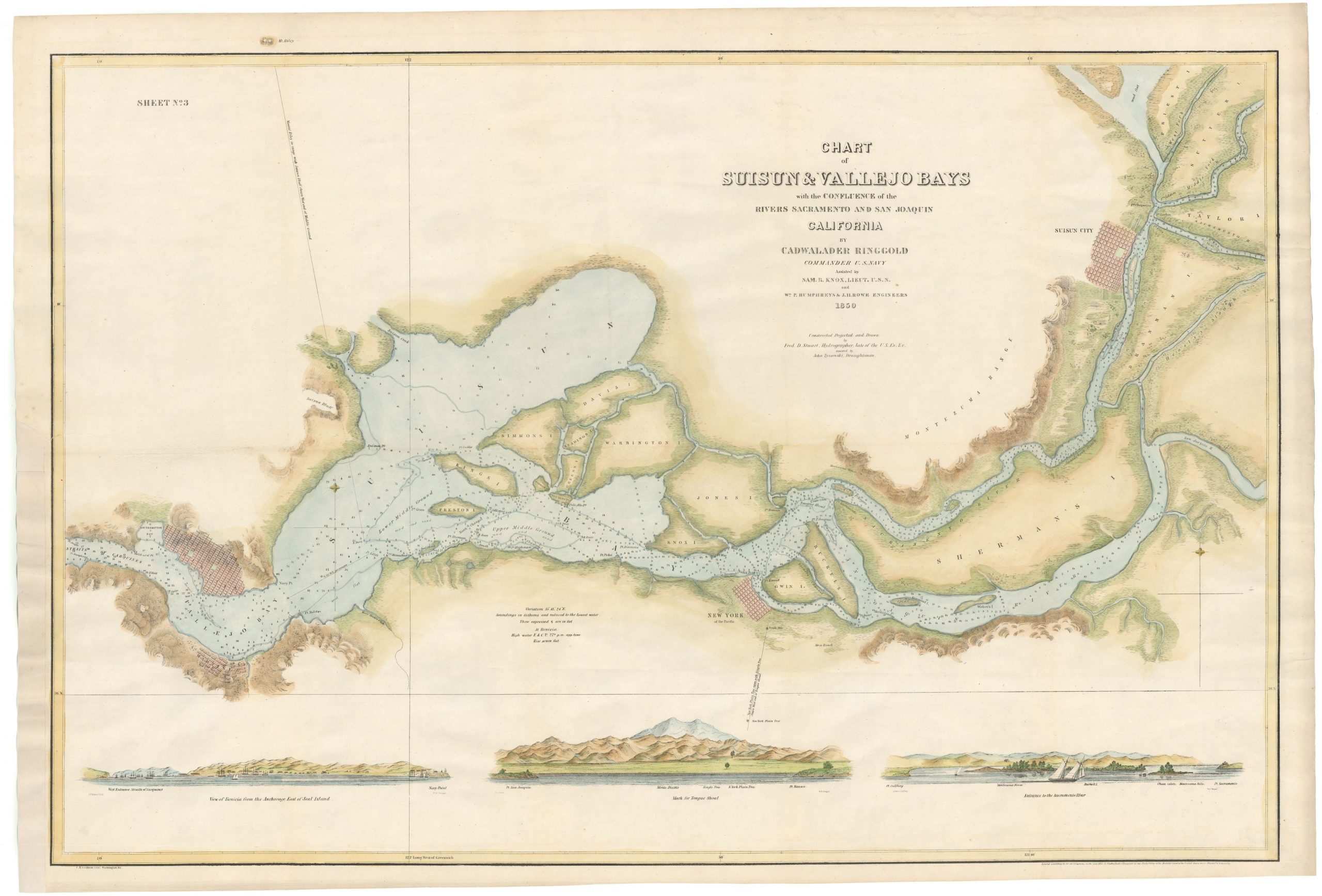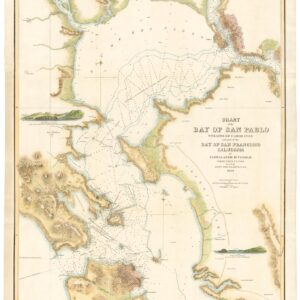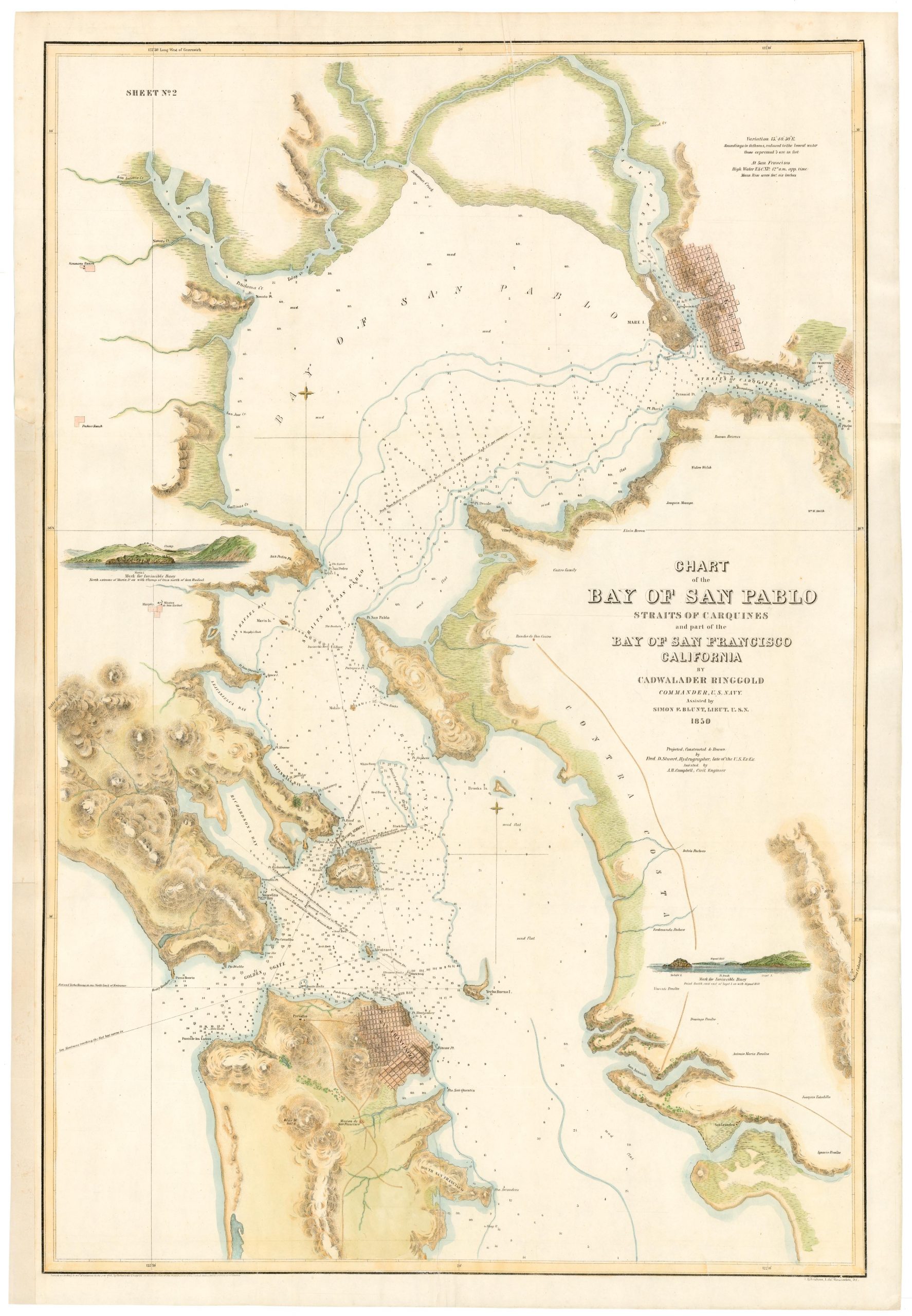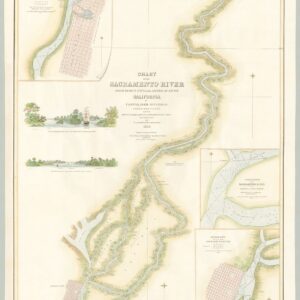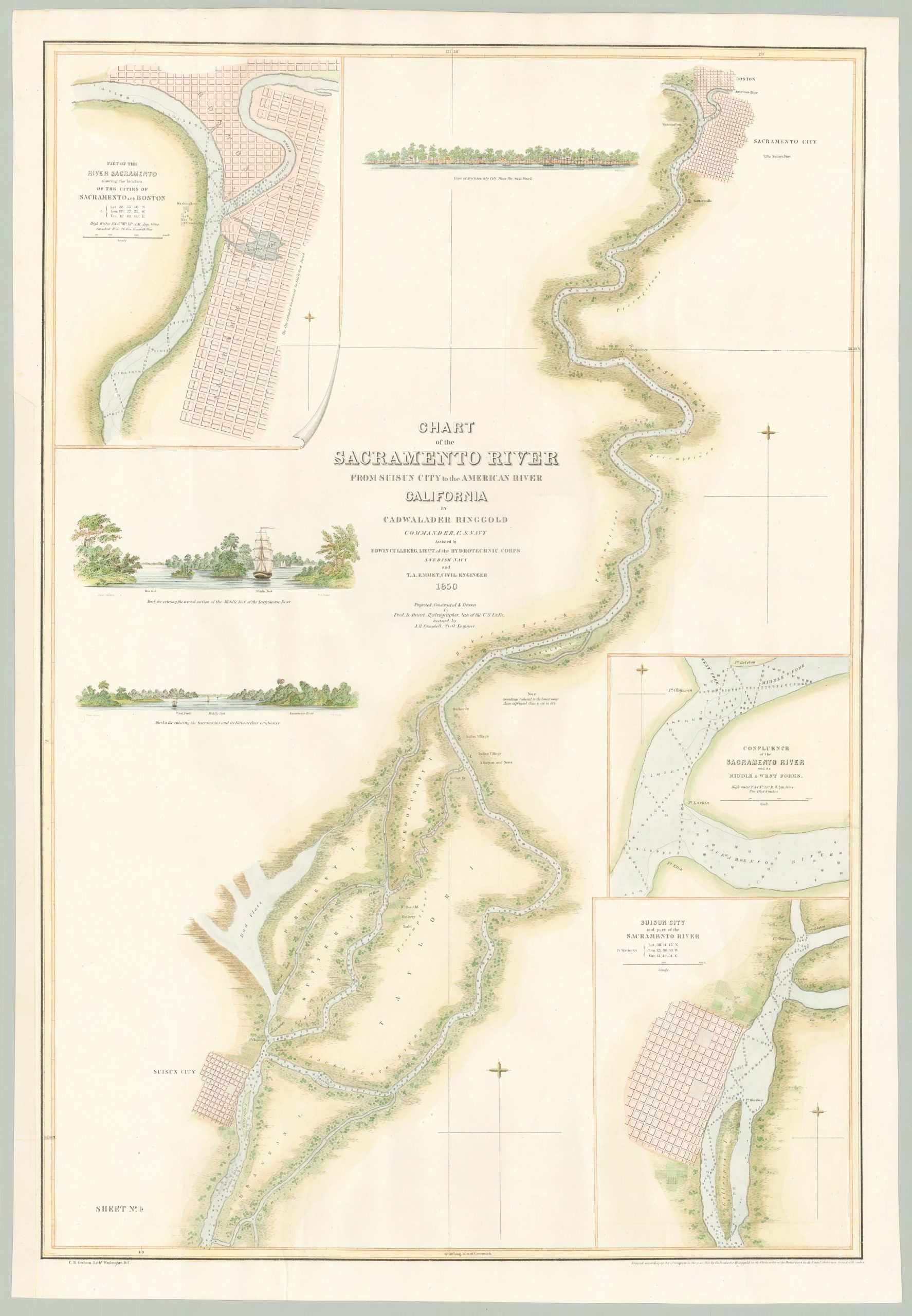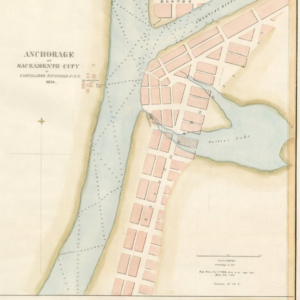Cadwalader Ringgold (August 20, 1802 – April 29, 1867) was an officer in the United States Navy who served in the United States Exploring Expedition, later headed an expedition to the Pacific Northwest and, after initially retiring, returned to service during the Civil War. During 1838–42, he was third in command of the United States Exploring Expedition in the Pacific, commanding Porpoise from 1840 at the invitation of the head of the project, Charles Wilkes. He carried out surveys of Antarctica, the South American coast, the Tuamotu Islands, Tonga, New Zealand and the Northwest Pacific coast of North America.
Ringgold was promoted to commander on July 16, 1849 and began the definitive survey of the San Francisco Bay region, suddenly important because of the discovery of gold in the area. Ringgold both built on previous surveys, most notably Frederick Beechey’s 1833 chart, and undertook a new series of triangulation and azimuth efforts, beginning at modern-day Pittsburgh, CA (then known as the ‘New York of the Pacific’). After the California surveys, Ringgold helped Navy officials choose a location for a dockyard for the Navy’s Pacific station. It later became the Mare Island Navy Yard.
In 1851, Ringgold published a series of charts, views, and sailing directions for the entrance to San Francisco Bay and the inland waterways of gold rush California. The charts paint an important picture of the region during a time of tremendous change.
-
-
Add to cartQuick View
- California, Bay Area & Silicon Valley
General Chart Embracing Surveys of the Farallones Entrance to the Bay of San Francisco and San Pablo Straits of Carquines and Suisun Bay and the Sacramento and San Joaquin Rivers
- $975
- Separate issue of Ringgold's Gold Rush-era river chart from San Francisco to Sacramento with Vallejo as State Capital.
-
Add to cart
Archived
- Out of Stock
- Bay Area & Silicon Valley
General Chart Embracing Surveys of the Farallones Entrance to the Bay of San Francisco and San Pablo Straits of Carquines and Suisun Bay and the Sacramento and San Joaquin Rivers
- Gold Rush-era river chart from San Francisco to Sacramento with Vallejo as State Capital.
- Read moreQuick View
-
- Out of Stock
- Bay Area & Silicon Valley, Gold Rush maps
General Chart Embracing Surveys of the Farallones Entrance to the Bay of San Francisco
- Ringgold's famous Gold Rush-era sea chart of the entrance to San Francisco Bay with an illustration of the Golden Gate trompe l'oeil.
- Read moreQuick View
-
- Out of Stock
- Bay Area & Silicon Valley, California
Chart of Suisun & Vallejo Bays with the Confluence of the Rivers Sacramento and San Joaquin California
- Gold Rush-era chart of the Lower Sacramento River.
- Read moreQuick View
-
- Out of Stock
- San Francisco, Bay Area & Silicon Valley, Gold Rush maps
Chart of the Bay of San Pablo Straits of Carquines and part of the Bay of San Francisco California
- Marvelous Gold Rush-era sea chart from the Golden Gate to San Pablo Bay.
- Read moreQuick View
-
- Out of Stock
- California, Gold Rush maps
Chart of the Sacramento River From Suisun City to the American River California
- The 1851 Ringgold chart of the Sacramento River with Sacramento-Boston inset.
- Read moreQuick View
-
- Bay Area & Silicon Valley
Straits of Carquines and Vallejo Bay / Anchorage off Sacramento City / Depot of the Pacific Mail Steam Company, Benicia / Vallejo and Mare Island Strait from the U.S. Coast Survey / Anchorage off San Francisco / Anchorage off New York of the Pacific
- Gold Rush California’s main harbors: including the state capital of Vallejo, the rapidly expanding city of San Francisco, and New York on the Pacific.
- Add to cartQuick View
